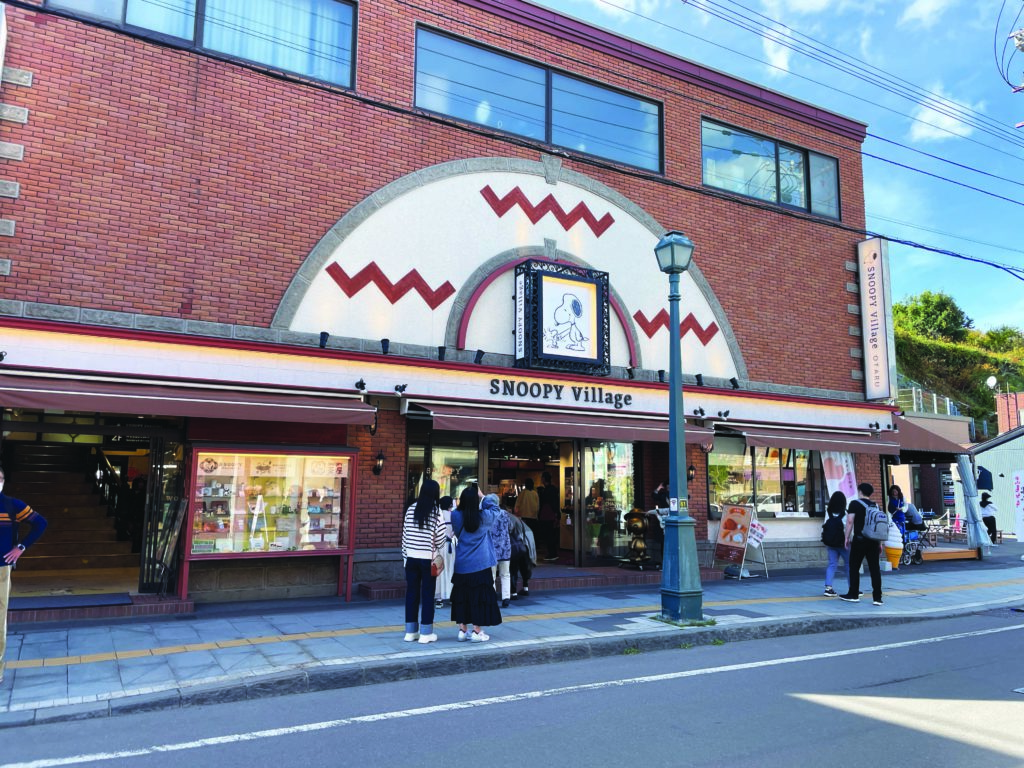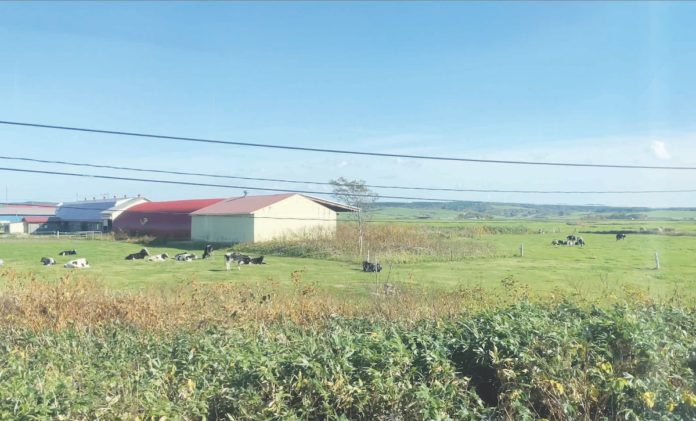The sun disappears behind the ocean horizon. The sky turns vanilla, and the wind stiffens. Twilight’s slow transformation into darkness reveals a million subtle shades along the way.
Those who have ever spent an evening on the Sonoma or Marin coast know exactly what I’m writing about. It’s one of the many North Bay ties that bind. There are plenty of others, ones that make us who we are, ones we share gladly with those who visit. The beaches, the farms, the bigger cities and small towns…
But what if I said there was another place, one far away, but one where someone might feel just as at home?
I’m happy to write that such a place exists. It shares our rocky coasts, rich soil and enviable scenic beauty. But most of the people there don’t look out over the Pacific to view the sunset.
They do so to watch the sunrise.
Welcome to Hokkaido, Japan.
Another City by the Bay
As San Francisco is the gateway to the North Bay, Hakodate fills the same role in Hokkaido. Imagine the peninsula flipped upside down, and instead of the Presidio, a mini mountain with excellent views from the summit. And, yes, expect to burn some calories walking up steep hills.
The connection between the two cities runs much deeper than similar geography. The Old Public Hall, built in 1910, features Japanese, Chinese, French and English architectural influences. Catholic and Russian Orthodox churches gaze out over the bay, along with scores of preserved homes that look better suited to Victorian England than Japan. Every culture that has come through Japan’s City by the Bay left a permanent mark.
All that’s missing is the Golden Gate.
And like in San Francisco, Hakodate’s seafood can’t be beat. Thankfully for visitors, the morning seafood market exists just steps from the central train station. Big spenders can put down about $400 for a whole king crab or $80 for a modest-sized rice bowl adorned with tongue-sized pieces of golden sea urchin.
First-timers will wish they’d packed a second stomach before taking the nearly four-hour train ride north to Hokkaido’s Santa Rosa, Sapporo.
Two Cities, One Heart
Sapporo is a sprawling metropolis with convenient access to Hokkaido’s natural beauty. Go west to see the ocean. Go east to find sprawling farms. Go south to encounter wilderness saved for future generations.
Sound familiar?
And as with Santa Rosa, in the center of Sapporo exists a testament to the botanist who preserved his city’s natural beauty. Sapporo’s Luther Burbank was Kingo Miyabe (1860-1950), a Harvard graduate who founded the city’s first botanical garden. Thirty-three acres just five blocks from Sapporo Station host old-growth forests and provide sanctuary to over 4,000 plant species. A modest museum in the style of a Maine farmhouse displays Miyabe’s writings, including an 1888 letter to an American colleague:
“It is my dream and hope that someday during my lifetime to lay a solid foundation of a model garden botanique in Sapporo for the instruction and refinement of the generations to come.”
After seeing it all firsthand, the author must write that Miyabe succeeded beyond his wildest dreams.
On to food. Santa Rosa may be famous for beer, but Sapporo has the city beat with its 19th-century brewery, now a German-style beer garden and museum. This red brick structure, one that could easily stand in for the Wonka factory, attracts beer lovers ready to pair more than a few Sapporo Classic lagers with servings of grilled lamb, pork and seafood.
Just don’t overdo it on the all-you-can-drink package. “Gentlemen, excuse me if I should stumble,” the author overheard a visitor say to his friends before shuffling off to the restroom.
From Sapporo, explorers wanting a North Bay experience have two options—one much, much farther away than the other.
Familiar Coastline, Surprising View
The trip up Highway 1 through Marin and Sonoma offers some of the best North Bay views. The slow drive and scenery let locals and visitors alike reconnect with nature and themselves.
Hokkaido’s Highway 1 (National Route 238) begins in Wakkanai, the most northern city in Japan and five hours by train from Sapporo. From there, a bus takes travelers the 20 miles around Tomales Bay’s long-lost cousin—Soya Bay. Fishing shacks, some new, some ancient, dot the narrow, pebbly beaches.
The final destination, Cape Soya, is a pleasant rest area much like the one at The Tides Wharf and Restaurant in Bodega Bay. A monument jutting out into the sea marks Japan’s most northern point. And on a clear day, visitors can see “it” while looking out over the ocean. In this case, it is not a pod of humpbacks or seals, but Russian Sakhalin’s rugged coast.
Turning around reveals hundreds of square miles of dairy farms that would in no way look out of place in Sonoma County. The half-a-million cows spread throughout northern Hokkaido produce everything from the butter found in Tokyo grocery stores to the rich ice cream people flock to Hokkaido just to eat, even for breakfast.
Happy cows live in California, but their Hokkaido counterparts ain’t doing so bad. They just need to spend winter nights indoors.
In fact, the only tell that Wakkanai and Cape Soya aren’t on the Sonoma or Marin coast is the smell, or, better put, lack of one. There is no odor of seaweed along the shore, no whiff of iodine in the air. The wind blowing between the Seas of Japan and Okhotsk carries only the faintest hint of salt.
It’s time to head back south, where other familiar yet new sights await.
Worlds Converge
Like the many small towns in western Sonoma and Marin, Otaru is Hokkaido’s weekend getaway destination. Only 40 minutes from Sapporo by train, this coastal city lets tourists explore preserved buildings, imagine themselves in a simpler time and have a good meal. And if visitors should get hungry for seafood, Otaru has it and then some. The city’s restaurants offer up some of the best crab in Japan, especially during the cold winter months.
Wine lovers find themselves with the same bounty of choices in the summer and fall. Rolling hills to Otaru’s west feature vineyards producing Japan’s finest pinot noir, chardonnay and pinot gris. The dark volcanic soil helps the fragile vines thrive in the area’s frigid winters and hot, humid summers.
Otaru has one more surprise for the North Bay traveler. Along the main shopping street is SNOOPY Village, a modern store dedicated to everything Peanuts. The merchandise inside ranges from stuffed toys to stained glass. And in the entryway, a small café serves up piping-hot sweet bean buns decorated with the faces of Snoopy, Lucy and good ol’ Charlie Brown.
But all good things must come to an end. The trip feels over too soon as one last train ride starts the journey home.


A Home for Everyone
The sun disappears behind the rolling hills. The Hokuto’s (Big Dipper) seven train cars seem to glide over the crashing waves just beyond the window. In the distance, the placid sea shimmers like mercury. Viewing such a splendid yet surreal sight, it’s bittersweet to think that Hokkaido, like the North Bay, is a place where so many people can visit but so few can live.
That feeling doesn’t inspire melancholy but a desire to return. The same pull that brings people back to Hokkaido again and again brings others to the North Bay again and again. These two places, separated by a vast ocean, accept visitors with open arms and let all who pass through feel at home during their stay, no matter how long or how short.
So North Bay readers may consider Hokkaido for a next international adventure. And they may return to see their home in a brand-new light.











